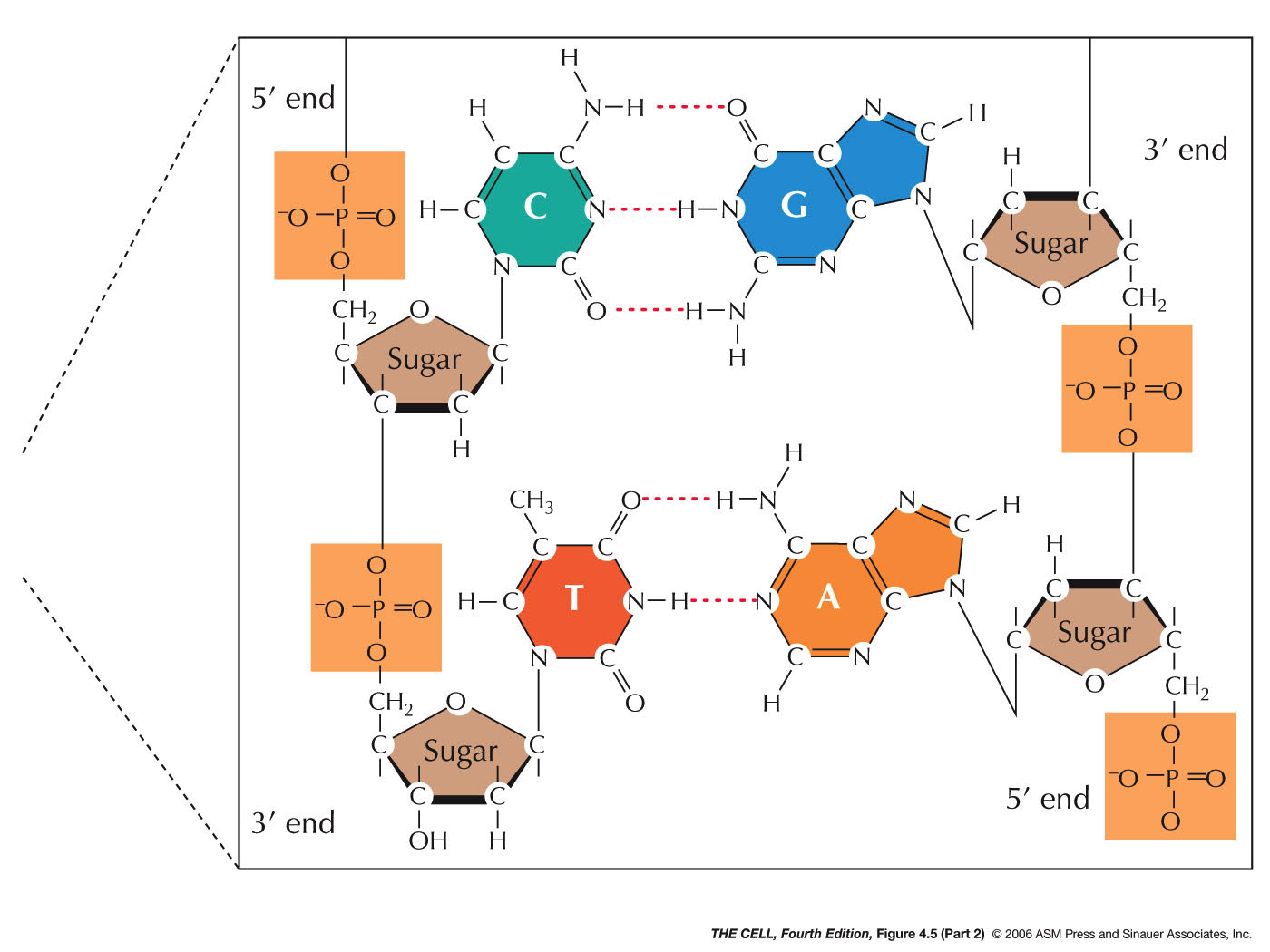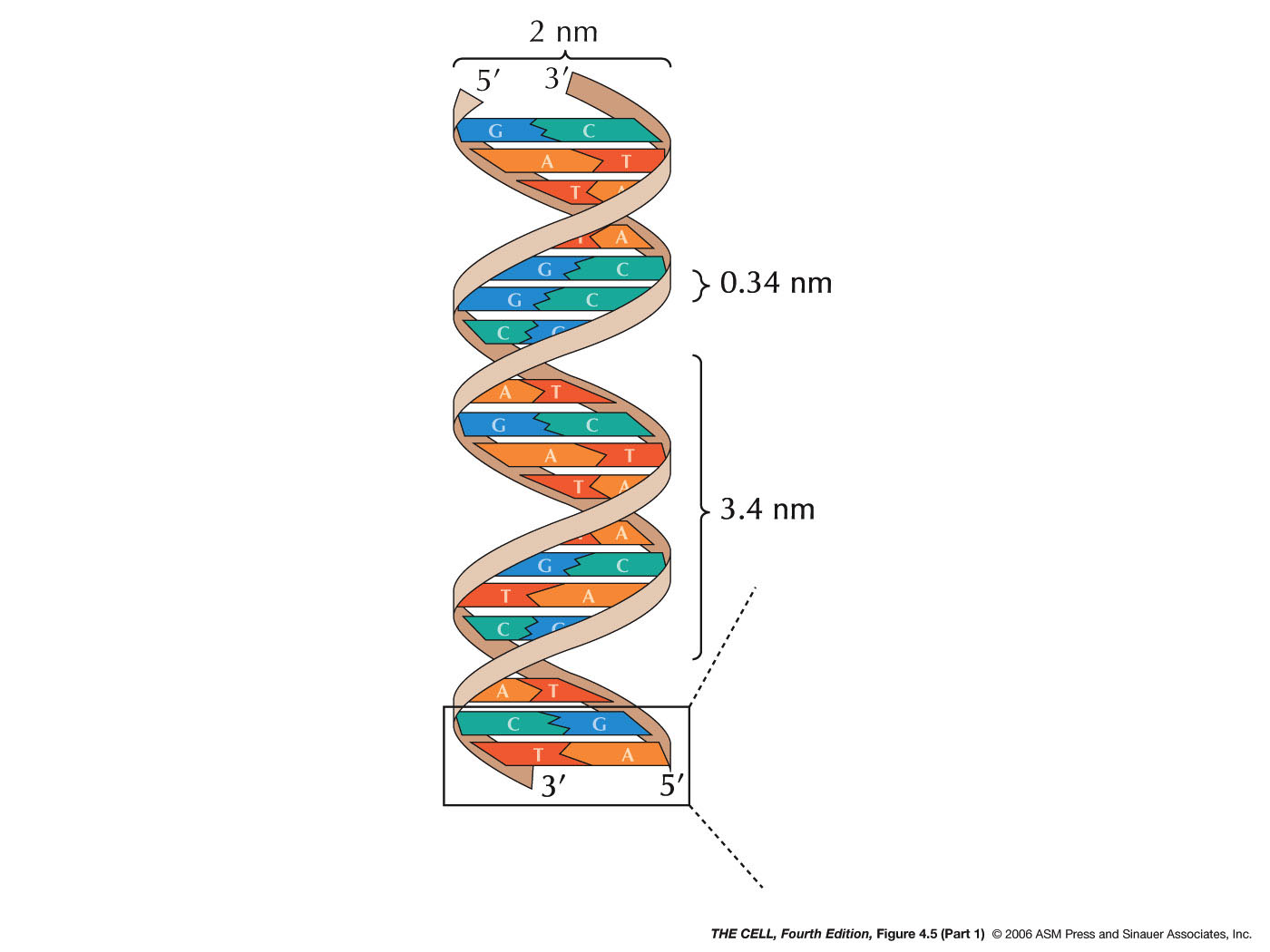|
What's the Big Deal about the
Double Helix, Anyway?
- 100+ Years of Genetics: In a little
over a century, our understanding of the genetic
material has progressed from a Austrian monk's
hypotheses about the transmission of hereditary units
to a detailed knowledge of how DNA directs cellular
activity.
- Genes as Units of Heredity: In the
1860s, Mendel postulated that there were units of
heredity that we now call genes. He said they exist
in pairs (alleles), the members of each pair
segregate into separate gametes, and that the
segregation of one pair is independent of the
segregation of another pair.
- Genes are on Chromosomes: In the
early 1900s, it was proposed by Sutton and Boveri
that genes are on chromosomes (the Chromosome
Theory). Morgan and Bridges later proved this to be
true by demonstrating that one gene in the fruit fly
is on the X chromosome. Two pairs of alleles that
are on the same pair of chromosomes will not
segregate independently (contrary to Mendel's
hypothesis), but will instead tend to move to the
same gamete during meiosis (linkage).
- The Genetic Material is DNA: In
1944, Avery, MacLeod, and McCarty showed that DNA
was the genetic material of a bacterium that causes
a type of pneumonia in mice.
- The Structure of the Genetic Material:
DNA is a polynucleotide (polymer of nucleotides).
- Nucleotide: Each DNA nucleotide
is composed of three subunits.
- Phosphate: A phosphate group
(PO4--) is attached to the 5' carbon of
deoxyribose. DNA is negatively charged because
of the phosphates.
- Deoxyribose: Deoxyribose is a
pentose sugar.
- Nitrogen Base: A nitrogen base
is attached to the deoxyribose. DNA's nitrogen
is all in the bases. There are four possible
bases divided into two classes.
- Purines: Purine bases have a
double ring structure and are larger than
pyrimidines. There are two purines in DNA.
- Pyrimidines: Pyrimidines
have a single ring structure and are smaller
than purines.
- The DNA Polynucleotide: The DNA
polynucleotide is made by joining many
nucleotides together into a polymer. The bond
is between one deoxyribose and the next
deoxyribose by way of a phosphate. Therefore, a
single strand of DNA has a sugar-phosphate
backbone with the bases protruding off to one
side. Any order of the bases is possible along
one strand.
- The Double Helix: In 1953,
Watson and Crick proposed a 3-dimensional
model for the structure of DNA: the double
helix. Their work was based on the X-ray
crystallography (X-ray diffraction) work of
Franklin and Wilkins, on the work of Chargaff
(Chargaff's Rules: A=T, G=C), and on a general
understanding of the structure of the DNA
polynucleotide (the information above). Their
research was primarily model building and won
them, along with Wilkins, the 1962 Nobel
Prize. Here are the highlights of their model.
(Watson
and Crick's 1953 article in Nature.)
- DNA has two strands that run in the
opposite directions
- The two strands are coiled in an
alpha-helix (right-handed helix).
- Base pairing holds an A of one strand to a
T of the other strand and a G of one strand
to a C of the other strand. This base
pairing is by hydrogen bonding involving N,
O, and H.
- So, what's the big deal?
 
|